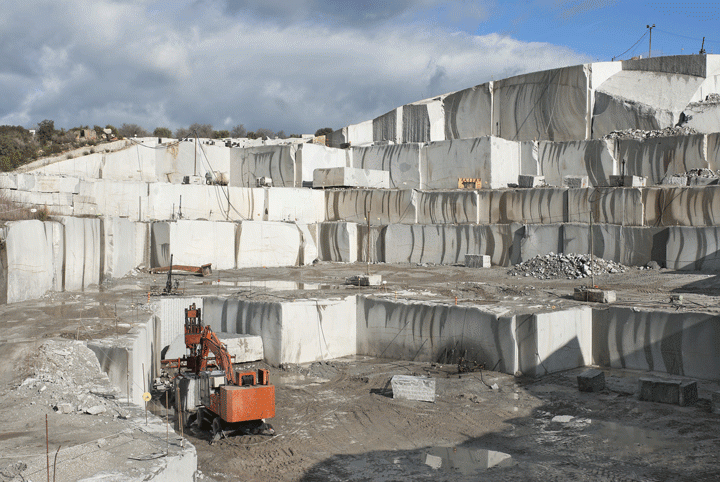A Trip Through Granite Quarries in South Africa: Unveiling Nature's Virtuosity
A Trip Through Granite Quarries in South Africa: Unveiling Nature's Virtuosity
Blog Article
Unearthing the Rich History and Sustainable Practices of Granite Quarrying
As we base on the precipice of discovering the complex tapestry of granite quarrying, a journey via time reveals not simply the physical act of removing stone but likewise the cultural and historic value woven right into the extremely textile of this method. From the ancient beginnings that laid the foundation for modern-day quarrying methods to the sustainable methods that are shaping the future of this sector, each carve mark on granite surface areas narrates waiting to be unearthed (granite quarries in south africa). The legacy of granite quarrying stretches much beyond simple removal; it is a testament to human resourcefulness, resilience, and the enduring appeal of this marvelous stone
Old Beginnings of Granite Quarrying
Dating back to ancient worlds, the practice of quarrying granite has been an important part of human background and building advancement. The earliest evidence of granite quarrying dates back to ancient Egypt, where large pyramids and detailed sculptures were crafted from this durable stone. The Egyptians utilized primitive devices to remove granite blocks from quarries, showcasing the relevance of this product in their huge constructions.
Relocating onward in background, the Greeks additionally made substantial payments to the quarrying of granite. The Greeks utilized granite in numerous architectural wonders, such as holy places and statuaries, showing their skill in shaping and carving this durable stone. The Romans further improved the methods of quarrying granite, utilizing advanced devices like blades and hammers to essence and shape granite for their legendary structures.
Through the centuries, the method of quarrying granite has evolved, with modern-day innovations enhancing effectiveness while preserving the classic appeal of this natural rock - granite quarries in south africa. From old human beings to contemporary builders, the legacy of granite quarrying remains to shape our globe
Advancement of Quarrying Methods
The evolution of quarrying methods has been noted by a continuous progression towards better effectiveness and accuracy in extracting granite. Early quarrying techniques included manual labor with standard tools such as blades, hammers, and wedges to extract granite blocks from the planet.
In more current times, the development of equipment reinvented the quarrying market, allowing quicker removal prices and raised performance. Technologies such as diamond wire saws, high-pressure water jets, and pneumatically-driven drills have become standard in contemporary quarries, allowing for specific cutting and reduced waste. Additionally, improvements in computer-controlled devices and 3D modeling have actually optimized quarrying operations, leading to marginal ecological impact and enhanced sustainability methods. As the demand for granite continues to rise, the development of quarrying methods stays indispensable to meeting sector needs successfully and sustainably.
Social Value of Granite
Granite holds an extensive cultural significance throughout various human beings due to its long-lasting visibility in building masterpieces and prized monuments. The social significance of granite expands beyond its physical features; it personifies you could try these out resilience, stability, and timelessness, making it a sign of enduring legacies and practices.

Lasting Practices in Quarrying
Among the abundant history of granite quarrying and its cultural relevance lies an expanding emphasis on sustainable methods within the market. As ecological understanding and problems concerning resource exhaustion have actually increased worldwide, the quarrying field has actually progressively embraced lasting methods to decrease its influence on the setting and bordering communities.

Furthermore, recovery and recovery of quarry sites post-extraction are essential to sustainable practices. By bring back quarried locations to a natural or beneficial state, such as creating wild animals habitats or entertainment rooms, quarriers can balance out the environmental impact of their operations and add favorably to the local environment.
Tradition of Granite Quarrying
With a historical backdrop steeped in workmanship and commercial development, what withstanding influence has granite quarrying left on the landscape of modern society? The heritage of granite quarrying transcends plain extraction practices; it has actually formed building wonders, metropolitan landscapes, web and social heritage worldwide. The durable nature of granite has made it a preferred choice for monuments, buildings, and infrastructure, standing as a testimony to the skill and creativity of quarry workers across generations.
Furthermore, the economic footprint of granite quarrying can not be overlooked. The market remains to offer employment opportunities and drive regional economies in regions where granite extraction prevails. It has likewise stimulated technological improvements in quarrying techniques and devices, causing more reliable and sustainable techniques.
In terms Continued of sustainability, the legacy of granite quarrying consists of initiatives to mitigate ecological effects with reclamation projects and liable resource monitoring. By stabilizing financial passions with ecological stewardship, the sector aims to make sure that future generations can proceed to take advantage of this long-lasting natural source.
Conclusion

Report this page